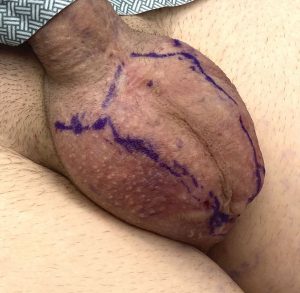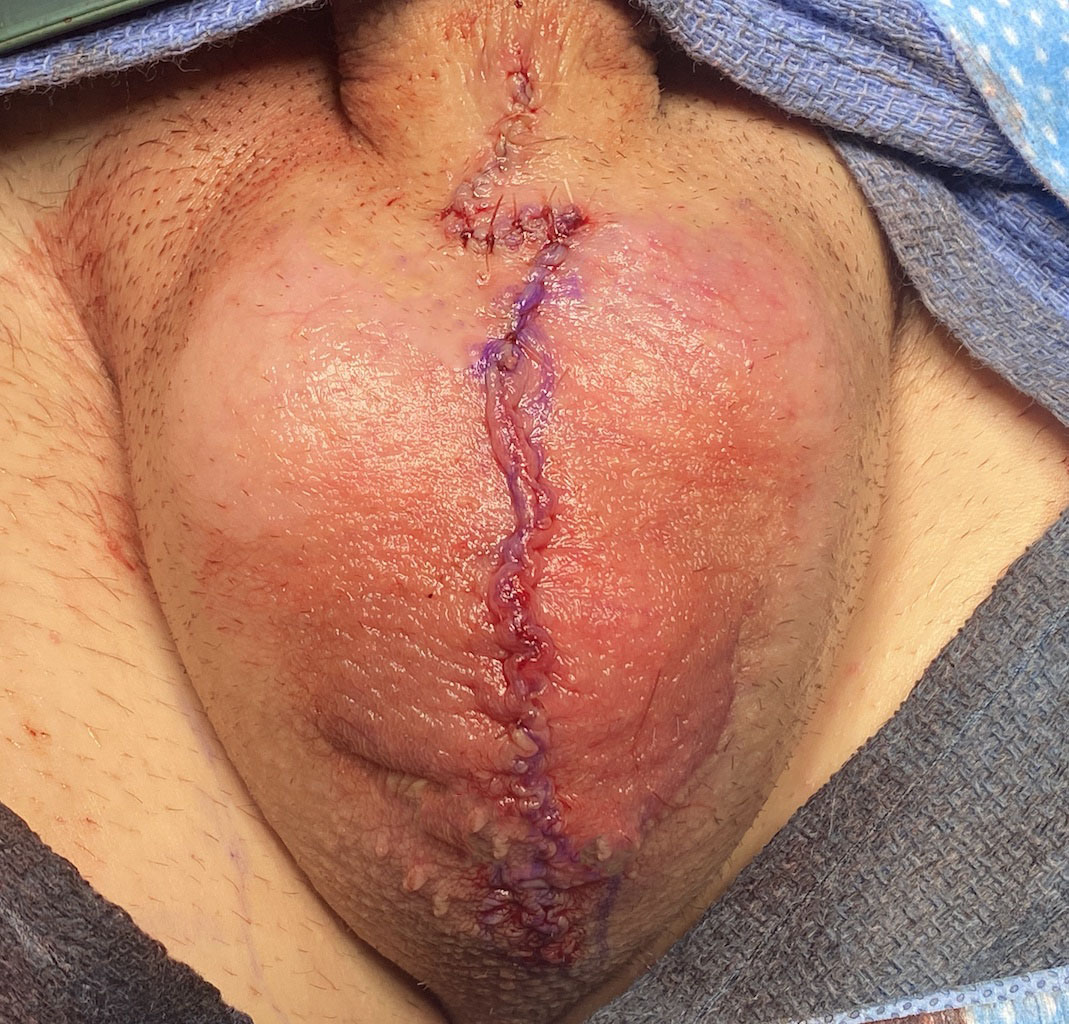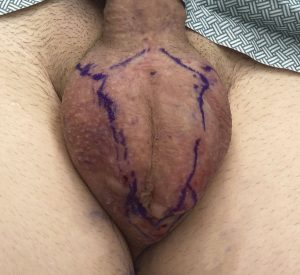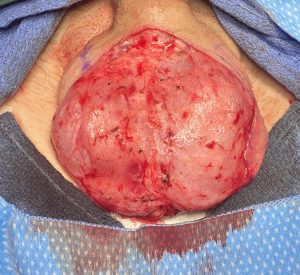Background: Like all pendulous structures of the body (e.g., breasts) the scrotum has the potential to haver excessive hang or sag. One might argue that ptosis is its natural aesthetic appearance due to the loose and very elastic scrotal skin. When this natural scrotal ptosis becomes excessive is a matter of personal preference for which there is no established scientific method to determine what is and is not normal.
In reducing the size of the scrotum, in which a scrotal lift naturally occurs, requires removal of scrotal skin. There are only two directions or axes in which it can be removed, vertical and horizontal. While either direction of elliptical excision can be done, the vertical axis along the midline raphe produces the greatest amount of skin excision, lift and the best scar outcome. It also allows any penoscrotal webbing that is present to be concurrently corrected along the same line of excision/closure.




I don’t see much value of a horizontally based scrotal reduction. It is simply the wrong direction to maximize the reduction as well as the lift. As indicated by the midline raphe the vertical ellipse allows for the most amount of skin removal as well as provides the maximal lift as well. While its posterior extension should stop short of the perineal tissues it can come forward onto the ventral side of the penis. To either correct pre-existing webbing or to prevent a contracture band across the penoscrotal junction a z-plasty is a valuable skin rearrangement technique for either benefit across this anatomic junctional area.
Case Highlights:
1) Scrotal reductions/lifts is best done along the midline raphe axis for the best result.
2) The pinch/lift preoperative marking method ensures the most scrotal skin is removed despite how radical it may look in surgery with the patient laying down.
3) Associated penoscrotal webbing can be concurrently corrected by a z-plasty at the base of the penis as an extension of the scrotal reduction.
Dr. Barry Eppley
World-Renowned Plastic Surgeon






